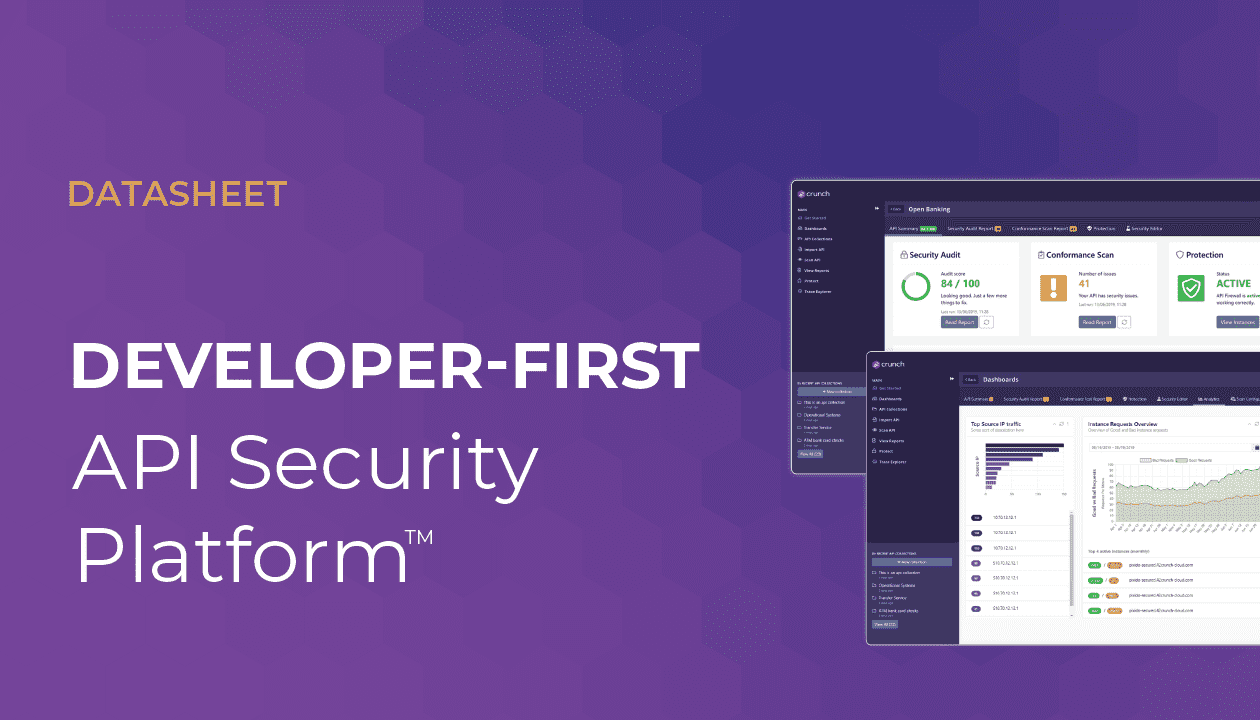Using 42Crunch to Detect and Prevent API Regressions and Drift
In issue 275 of APISecurity.io, we covered a report about an attack on a cryptocurrency platform where a vulnerable API was exploited in an unusual way.
Typically, API attacks involve malicious client requests aimed at backend systems and services. But in this instance, it was the other way around: the attack originated from the backend API itself, serving up a malicious payload to trusting users and clients.
This kind of unintended behavior is a telltale sign of API drift: inconsistencies between the API’s actual behavior and its intended design. When drift happens unintentionally, due to a code regression, misconfiguration, or misfiring integration, it can cause both integration and security headaches. And in fast-moving API environments, it’s notoriously hard to detect accurately without being flooded with false positives.
But when API drift is intentional, as it was in the CoinMarketCap incident, it becomes something much more dangerous: a calculated abuse of the trust users place in your apps, platforms, and websites. That’s why this incident deserves a closer look, to better understand malicious API drift, and more importantly, how you can defend against it.
What happened at CoinMarketCap.com
The CoinMarketCap platform occasionally loads an animated “doodle” graphic on its homepage. It’s a fun little animation used to share holiday wishes or promote events. The doodle is loaded dynamically through two API calls:
- The first call from the platform asks the API, “Got a doodle for today?”. If yes, the API responds with a URL pointing to the doodle file, typically hosted on an S3 bucket under a trusted domain like coinmarketcap.com
- The platform then makes another API request to fetch the graphic from that URL and display it to users
This process is standard and likely similar to how your own platforms and apps dynamically load content via API calls.
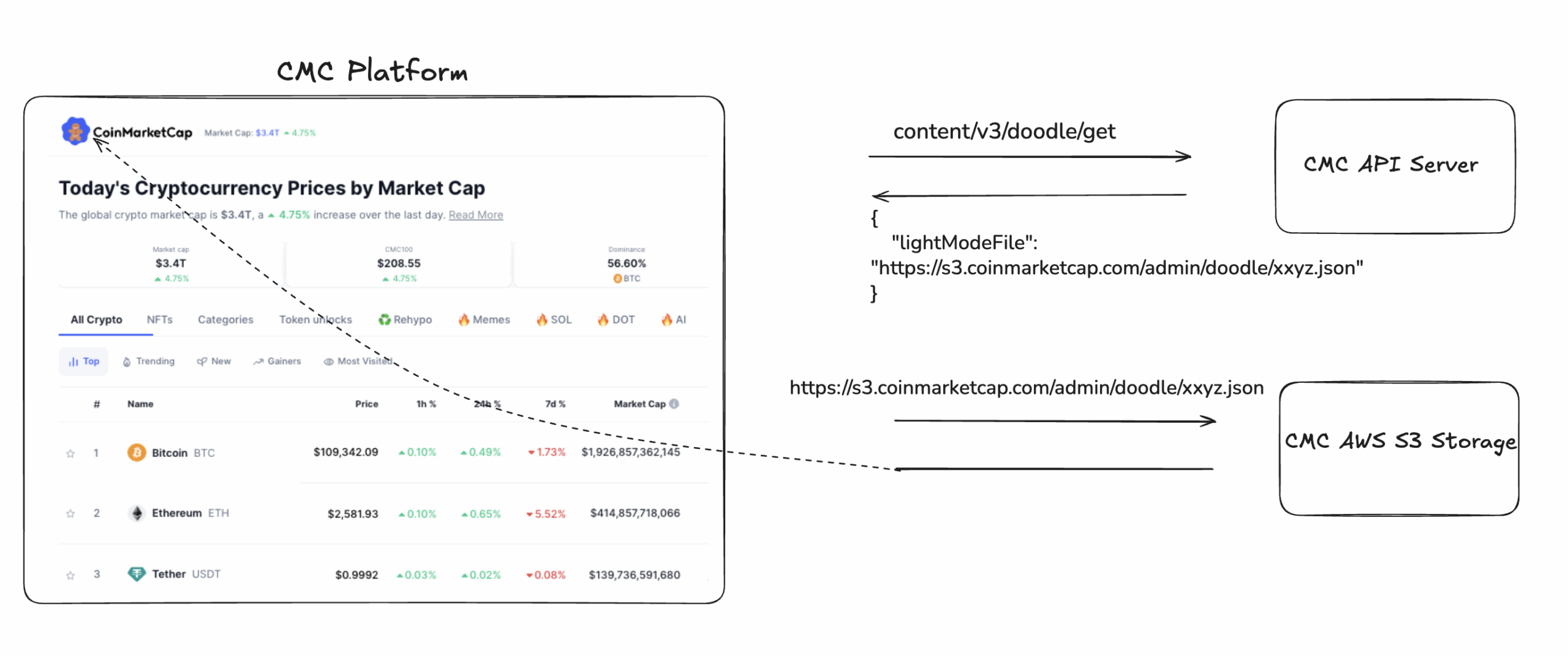
Simplified illustration of API calls from the CMC platform
At some point, the API stopped returning the expected URLs and began returning an unknown, malicious URL instead. The frontend then loaded the file and suddenly users visiting the platform’s homepage were presented with a wallet verification popup. You can guess what happens from there: financial loss for customers, and reputational damage forthe company.
This unexpected change in API behavior is an example of API drift: an inconsistency between how an API is supposed to behave by design and how it actually does.
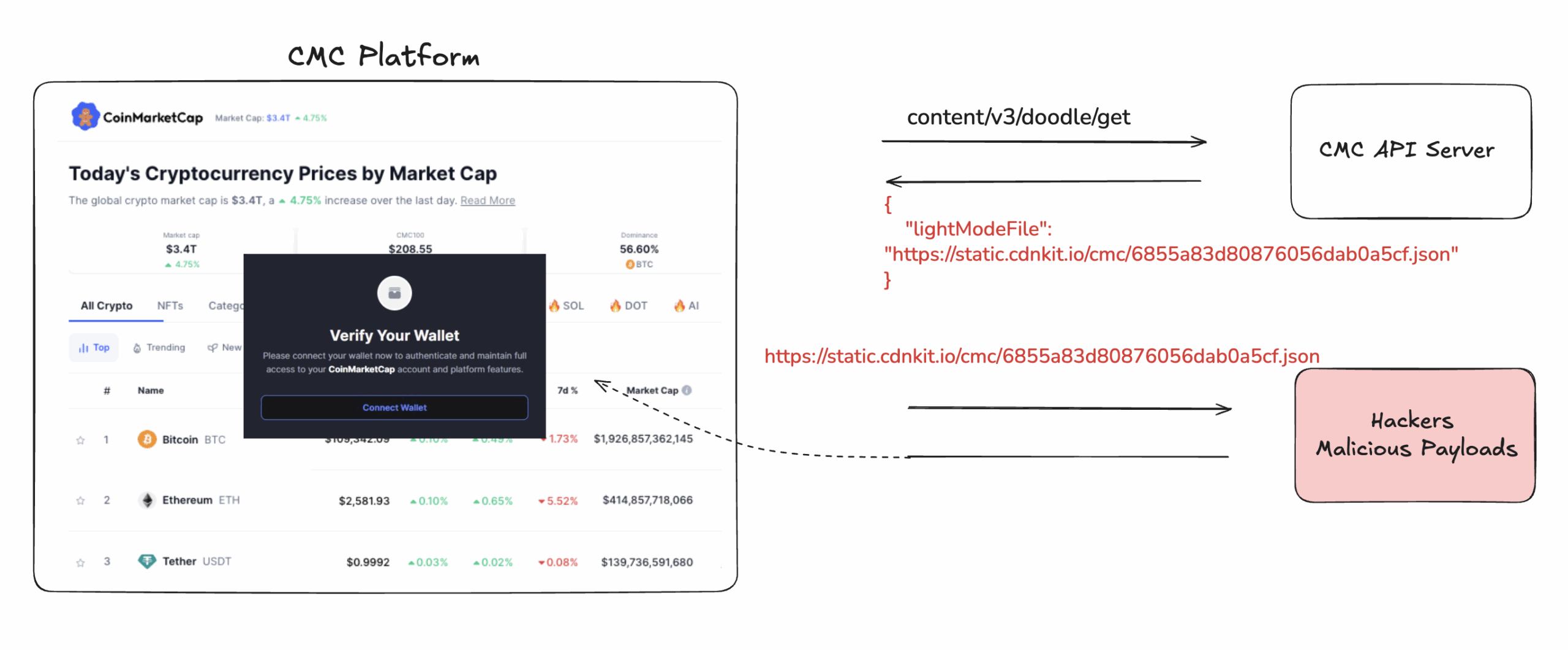
Simplified illustration of a malicious API response from the CMC platform
Details haven’t yet emerged as to how the attackers tampered with the API response in this incident. What is clear though, is that APIs are no longer isolated endpoints. They’re increasingly interconnected to a growing web of external systems: third-party APIs, AI-powered services, and partner ecosystems.
A vulnerability at any of those external points, whether it’s a large language model (LLM) returning unsafe data or a compromised upstream API, can inject malicious data directly into your API. And your API, in turn, passes that dataalong to end users, who trust it because it came through your platform, mobile app, or website.
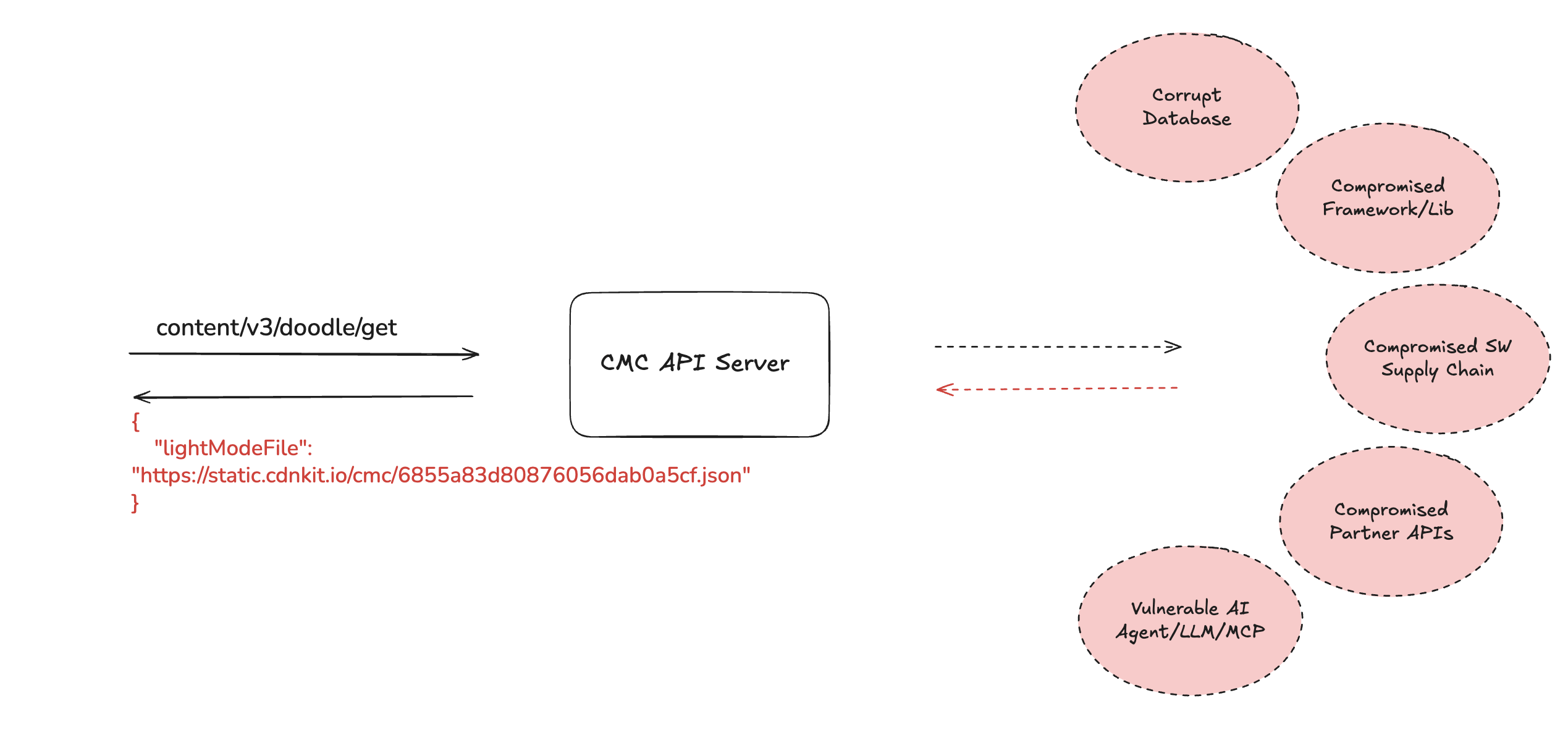
Drift can originate from many sources that contribute to the API’s output
Today, API security isn’t just about defending your backend systems from malicious clients. It’s equally about protecting clients and users from compromised or inconsistent APIs.
How 42Crunch Stops API Drift Before it Impacts Your Users
API drift, when implementations deviate from intended behavior, is a silent killer of reliability and trust. The best defense is precision, starting with a hardened API contract. This contract, defined in formats like OpenAPI, aligns development, testing, and runtime teams around a consistent understanding of how the API should behave.
When fully integrated into the API lifecycle, the contract becomes a powerful tool for detecting and preventing API drift.
Harden API Contracts Automatically with Built-In Governance
42Crunch solves the challenge with its API Audit feature, which enforces strict governance rules around API contract design. These rules ensure consistency in data structures and security controls from the very start. To maximize adoption, API Audit integrates directly into popular IDEs such as VSCode, Cursor, JetBrains, and Eclipse, making it easy to apply security and quality standards without disrupting existing workflows.
The same checks are also automatically enforced in CI/CD pipelines for each pull request, ensuring that every change is vetted for compliance. This consistent, automated governance process helps teams maintainalignment across the entire API lifecycle.
Ultimately, a hardened, governed API contract lays the foundation for stable and secure API behavior, eliminating ambiguity and false positives, preventing drift, and enabling teams to scale their API inventory with confidence.
Catch API Drift Early in Development
42Crunch API Scan allows security and development teams to continuously check for drift during development, both in the IDEs and across CI/CD pipelines. Whether a change is intentional or a regression, API Scan compares API behavior against its contract to catch inconsistencies before they reach production.
Stay Ahead of Changes in Third-Party APIs
API drift isn’t just internal. Partner and third-party APIs can change without warning. With 42Crunch, you can automatically baseline their behavior and continuously monitor them with API Scan. This ensures upstream changes don’t silently break your integrations or introduce risks to your system.
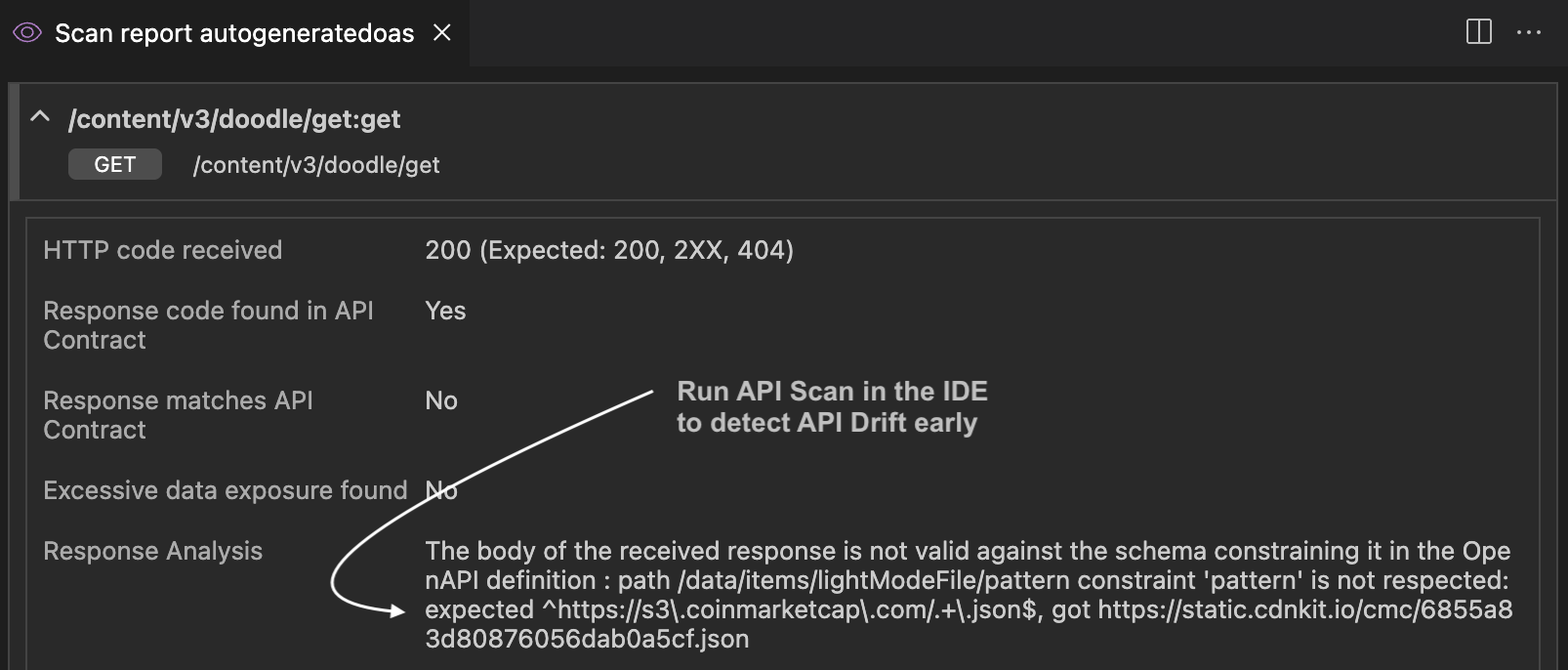
Prevent Drift at Runtime for Critical APIs
For business-critical or high-risk APIs, detection may not be enough, and API drift must be actively prevented in real time. With 42Crunch API Protection, the API contract is enforced at runtime, ensuring that all API requests and responses strictly conform to expected behavior.
If an API begins returning unexpected fields, invalid formats, or data outside of defined boundaries for the service, those responses can be automatically blocked before reaching your customers at the front end.

This real-time enforcement closes the gap between expected and actual API behavior, shielding your customers from both accidental regressions and malicious attacks, the two faces of API drift.
Take Control of Your API Security
API drift is an immediate security concern with real consequences. Whether it’s your own APIs or those from partners and third parties, unpredictable behavior leads to vulnerabilities, broken integrations, and customer-facing issues.
42Crunch uniquely gives you full lifecycle protections against API drift:
- Design-time hardening: Build enforceable, OpenAPI-based contracts with automated governance across the team
- Development-time detection: Catch drift early with continuous checks in the IDE and CI/CD pipelines
- Third-party monitoring: Automatically baseline and monitor external APIs for unexpected changes
- Runtime enforcement: Block drift in real time with contract-driven API protection
All of this is delivered through a single, purpose-built API security platform, integrated seamlessly with your existing tools and workflows.
Stop chasing inconsistencies. Start enforcing predictability in your APIs.
Contact 42Crunch today to see how we can help you detect, monitor, and prevent API drift before it impacts your users and customers.



